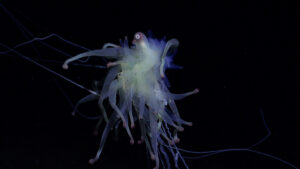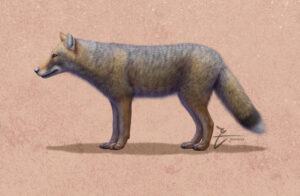A passion for the natural world drives many of our adventures. And when we’re not actually outside, we love delving into the discoveries about the places where we live and travel. Here are some of the best natural history links we’ve found this week.
The best-preserved ice age animal: In 2017 and 2018, researchers found two mummified cave lion cubs thawing in the permafrost of Yakutia. Radiocarbon dating showed that “Boris” lived 44,000 years ago and “Sparta” lived 28,000 years ago. Sparta is “arguably the best-preserved Ice Age animal ever found,” according to the Centre for Paleogenetics in Stockholm. The skeletal shape and condition of the soft tissue indicated that both animals were a few months old when they died. Interestingly, their large teeth did not correlate with the cubs’ small heads. This suggests that postnatal development was faster than in modern-day lion cubs.

Boris and Sparta. Photo: Boeskorov et al., 2021
Marathon mammoth
Woolly mammoths walked 70,000km in their lifetime: Analysis of a 17,000-year-old mammoth fossil has found that the animal walked 70,000km during its lifetime. “It’s not clear-cut if it was a seasonal migrator, but it covered some serious ground,” said Matthew Wooller. Researchers used the isotopic signatures in the rings of the mammoth tusk to map its journey around Alaska. A significant change in the chemical composition of the tusk occurred when the mammoth was 15 years old. This suggests its age when the young animal was kicked out of a herd.
Grizzly bear DNA maps onto Indigenous language families: DNA analysis shows that grizzlies from coastal British Columbia split into three distinct groups. Those groups align very closely with the regions of three indigenous language families. Jesse Popp, an environmental scientist, said that the cultural and biological diversity in the region are intertwined. No physical barriers, such as rivers, kept the bears apart and genetically distinct. It is possible that they remained in specific regions because they are resource-rich, eliminating the need for travel.

Three distinct genetic groups of grizzly bears align with the boundaries between Indigenous language families (gray lines). Photo: L. H. Henson et al.,2021
Australia’s flying dragon
Australia’s largest ‘dragon’ unveiled: A pterosaur fossil found in the Australian outback a decade ago has finally been identified as a new species. Thapunngaka shawi is the closest thing that Australia has ever had to a dragon. The 105-million-year-old pterosaur had a seven-metre wingspan and 40 razor-sharp teeth. “From its morphology, it’s mostly likely adapted for a carnivorous lifestyle. Its teeth were probably designed for holding onto slippery fish,” said Tim Richards of the University of Queensland.
Emperor penguins may be extinct by 2100: Federal wildlife officials have announced a proposal to protect emperor penguins under the Endangered Species Act. The penguins spend large amounts of the year on the sea ice of Antarctica. This is essential for breeding, raising young, and escaping predators. But if sea ice continues to melt at the rate predicted by climate models, over 80 percent of emperor penguin colonies will be extinct by 2100.

Machu Picchu. Photo: Shutterstock
Machu Picchu slightly older than previously thought: There was activity at Machu Picchu two decades earlier than research suggested. Scholars previously dated the beginnings of the site to between 1440 and 1450. Now radiocarbon dating of human remains shows it was in use from 1420. “The remains show little evidence of involvement in heavy physical labor, such as construction, meaning that they likely were from the period when the site functioned as a country palace, not when it was being built,” the scientists said.






